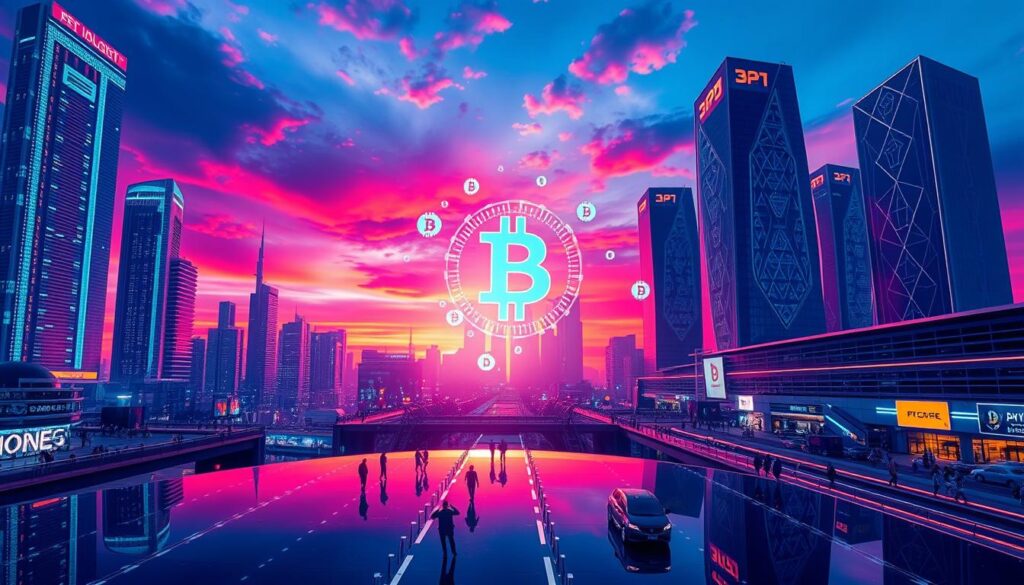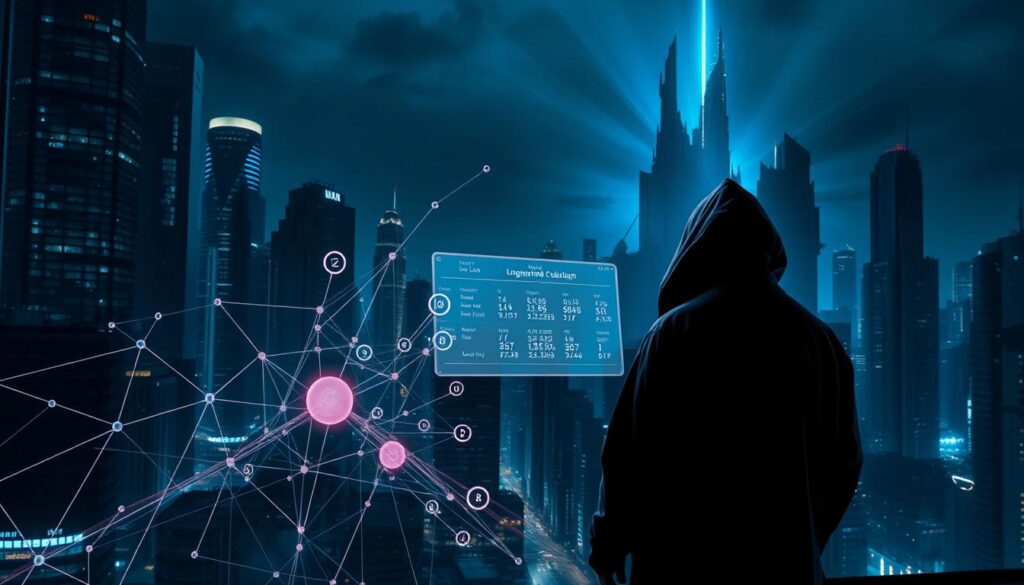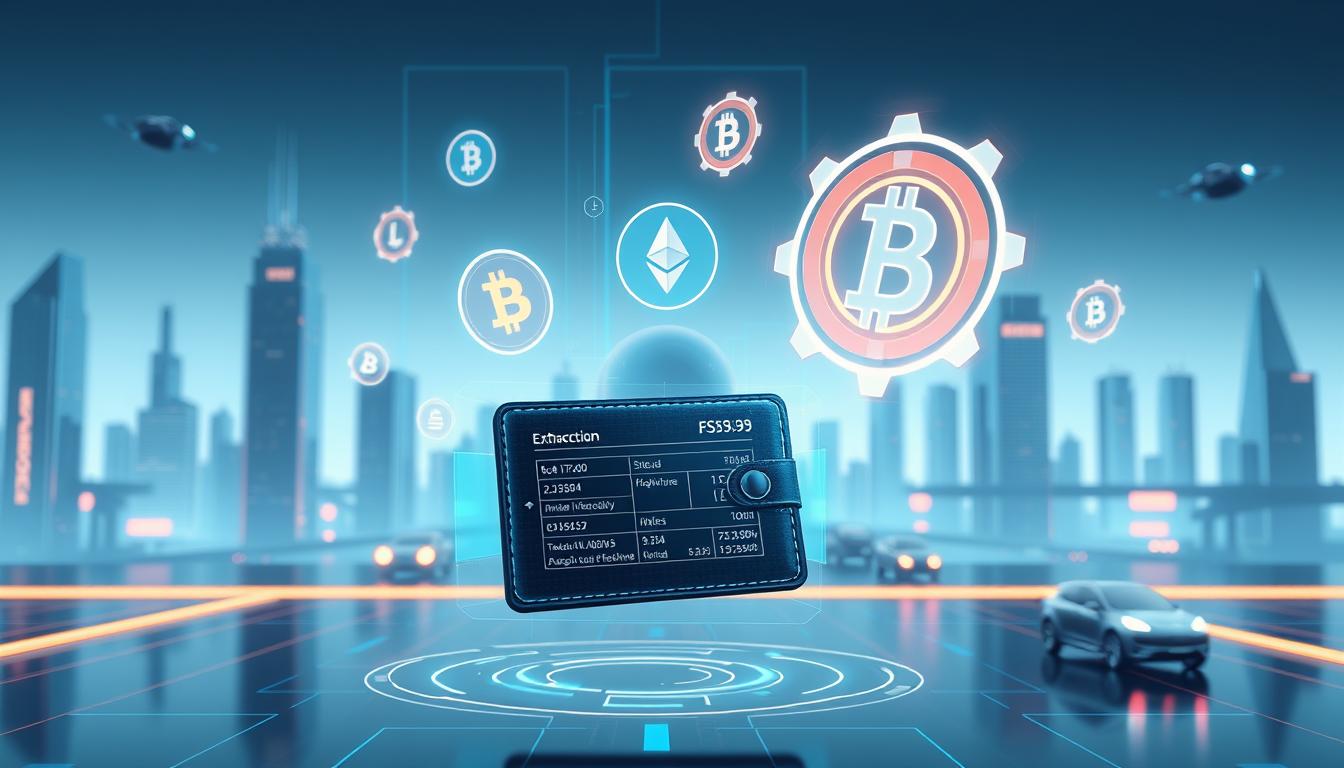Now Reading: NFT Art Digital Collectible Ownership: A Guide
- 01
NFT Art Digital Collectible Ownership: A Guide
NFT Art Digital Collectible Ownership: A Guide
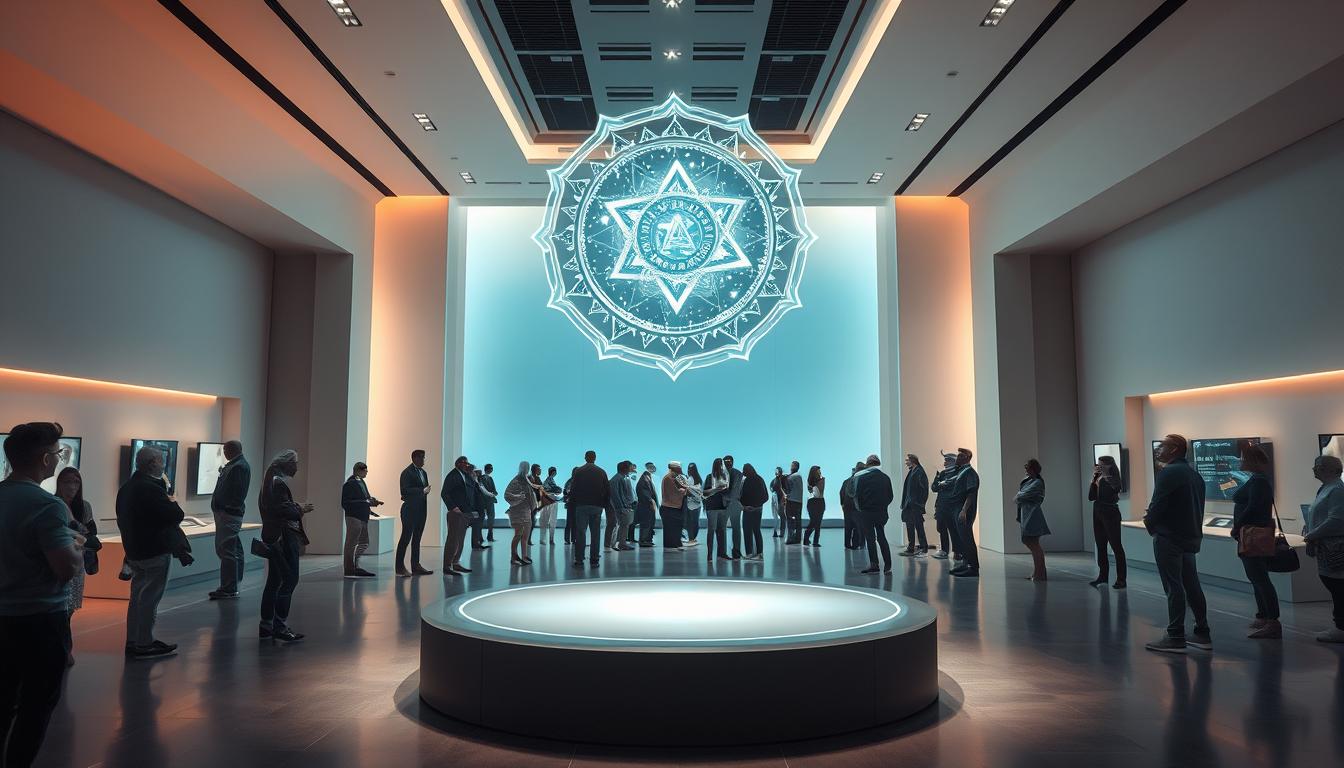
A new type of asset is changing how we think about value online. These unique tokens, known as nfts, are creating a revolution in the digital world.
They offer a way to prove true ownership of special items. Unlike a standard image file, a digital collectible secured by this technology cannot be copied in the same way. It has a unique certificate of authenticity.
This technology is built on a secure digital ledger called a blockchain. It records who owns what, making everything clear and trustworthy. This system benefits creators and collectors alike.
Our beginner’s guide to digital collectibles explores this exciting shift. We will show you how these nfts are reshaping entire industries.
Key Takeaways
- Non-fungible tokens create verifiable scarcity for online items.
- Blockchain technology provides a transparent record of ownership.
- These assets are transforming how creators earn from their work.
- Collectors can now possess unique digital items with proven authenticity.
- The market for these tokens spans art, music, gaming, and beyond.
- Understanding this space offers new economic and cultural opportunities.
Introduction to NFT Art Digital Collectible Ownership
At the core of this digital revolution lies a simple yet powerful concept: provable scarcity in the online realm. Non-fungible tokens create verifiable uniqueness for virtual items through advanced cryptographic technology.
Digital Innovation and Blockchain Basics
Blockchain technology serves as the foundation for these unique tokens. This decentralised digital ledger records every transaction with complete transparency.
The system ensures security and permanence for all recorded information. Each entry becomes immutable once added to the chain.
| Characteristic | Fungible Assets | Non-Fungible Assets |
|---|---|---|
| Interchangeability | Fully interchangeable | Unique and irreplaceable |
| Value Basis | Equal value per unit | Individual characteristics |
| Examples | Cryptocurrencies, traditional money | One-of-a-kind digital items |
Defining Unique Digital Collectibles
Each non-fungible token contains distinct metadata and identification codes. This guarantees that no two tokens can be exactly alike.
The ERC-721 standard on Ethereum ensures this uniqueness property. Smart contracts manage the specific terms and transfer conditions.
This technology creates digital certificates of authenticity with proven provenance. It establishes clear ownership history that traditional files cannot provide.
The Evolution of Digital Collectibles
The journey of virtual items from basic files to prized possessions marks a significant shift in our digital economy. This transformation was powered by new technology that introduced verifiable scarcity.
Early online content could be copied endlessly, which limited its worth. Blockchain changed this by creating a system of proven uniqueness for each item.
From Simple Images to Valuable Assets
Creators can now tokenise their work, providing undeniable proof of authenticity. This allows them to sell directly to enthusiasts, removing traditional gatekeepers.
In gaming, players truly own their in-game items. These virtual goods can be traded or sold, giving them real-world value.
Rise of Digital Art, Music and Gaming
The market for these unique tokens has seen astonishing growth. Record-breaking sales, like Beeple’s $69.3 million piece, demonstrate their immense value.
Musicians and other creators also use this technology. They offer exclusive content and experiences, building stronger connections with their fans.
This evolution shows how technological innovation can create new economic opportunities. It empowers both creators and collectors in a rapidly changing landscape.
Practical Applications in Real Estate and Digital Assets
Industries with complex ownership structures are discovering new efficiencies through tokenisation. This technology offers practical solutions beyond creative markets.
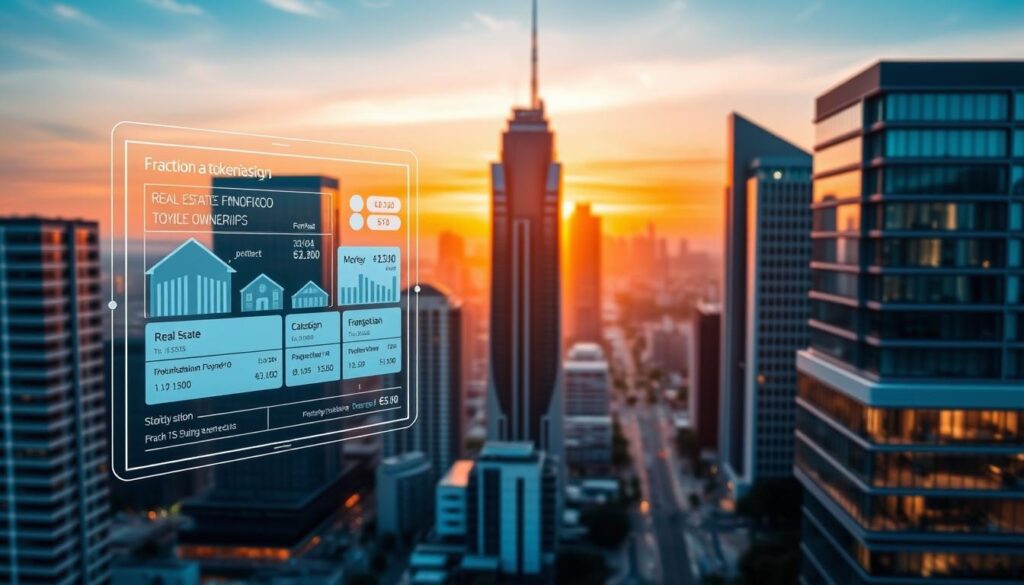
Traditional property transactions often involve multiple intermediaries and lengthy processes. Token-based systems streamline these operations with transparent records.
| Aspect | Traditional Approach | Tokenised Solution |
|---|---|---|
| Transaction Speed | Weeks or months | Near instant |
| Verification Process | Manual checks required | Automated blockchain verification |
| Fractional Investment | Limited opportunities | Accessible to smaller investors |
| Record Security | Centralised databases | Distributed ledger technology |
NFTs in Real Estate: Fractional Ownership and Security
Property markets benefit significantly from tokenisation. Investors can purchase fractions of physical assets through secure platforms.
This approach democratises access to real estate investment. Multiple parties can share ownership of valuable properties.
Transforming Education with Digital Certificates
Academic credentials gain new security through blockchain verification. Institutions issue tamper-proof qualifications directly to students.
These certificates remain permanently accessible and verifiable worldwide. The system eliminates fraudulent claims about educational achievements.
Enhancing Healthcare through Secure Data Management
Medical records receive robust protection through encrypted token systems. Patients control access to their sensitive health information.
Authorised professionals can retrieve comprehensive medical histories securely. This improves treatment accuracy while maintaining privacy standards.
The Role of Blockchain Technology in Digital Ownership
Secure digital ownership depends entirely on the underlying technology’s architecture. The system combines several components to create trustworthy verification.
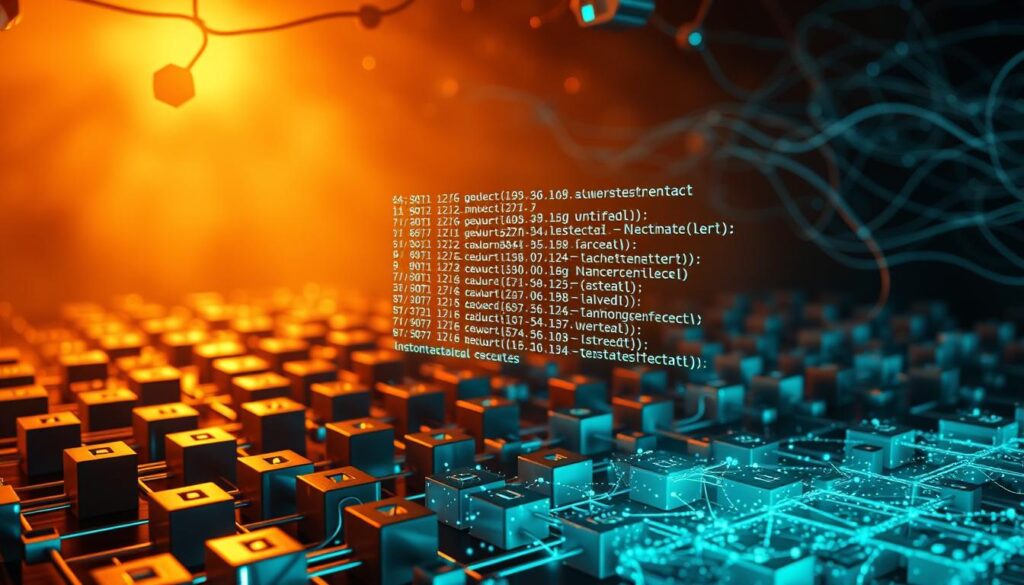
Smart Contracts and the Immutable Ledger
Self-executing contracts form the operational core of this system. These programmes contain specific rules governing each transaction.
When a purchase occurs, the contract automatically verifies and transfers ownership. This process eliminates intermediaries, reducing costs and increasing speed.
The blockchain serves as a permanent, transparent record. Every transaction becomes part of an unchangeable ledger across distributed networks.
Standards and Verification in the Ecosystem
The ERC-721 standard established the framework for creating unique tokens. This ensures each item possesses non-replicable properties.
Different blockchain networks support these transactions, each offering distinct advantages. Security comes from decentralised verification rather than central authority.
This technical foundation guarantees the authenticity that gives these assets their value. The combination of permanent records and automated contracts creates trustless systems.
NFT art digital collectible ownership: Empowering Creators and Collectors
A revolutionary compensation model ensures artists benefit from their work’s long-term appreciation. This system fundamentally changes how creative professionals earn from their creations.
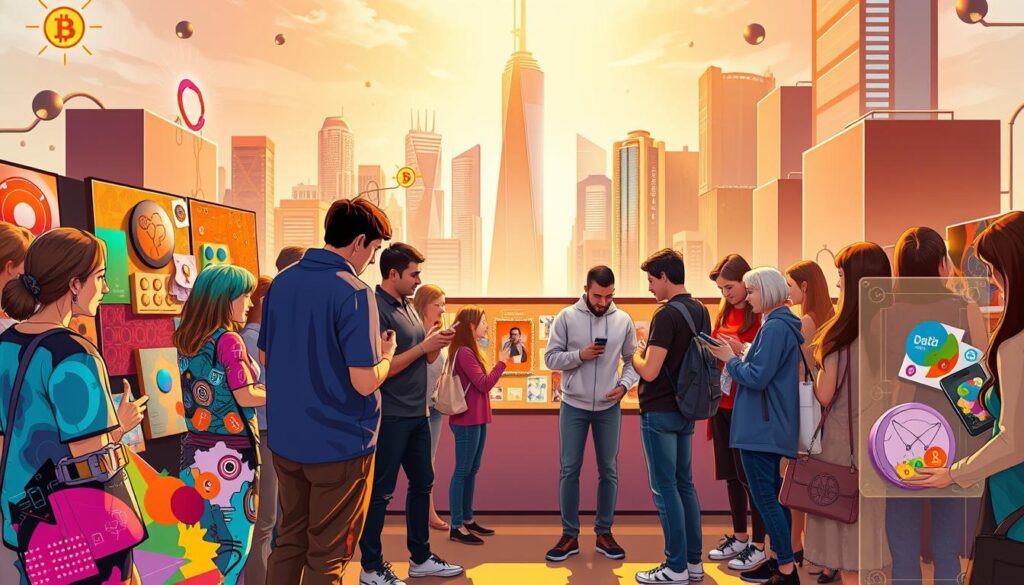
Automated Royalties and Direct Sales
Smart contracts enable creators to receive ongoing payments whenever their work changes hands. These automated systems typically allocate 5-10% of secondary sales back to the original artist.
This creates perpetual revenue streams that continue indefinitely. Artists like Beeple continue earning from his landmark $69.3 million sale through subsequent transactions.
The direct sales approach removes traditional gallery intermediaries. Creators now retain more value from their work while setting their own terms.
Establishing Trust and Provenance with Tokenisation
Blockchain verification creates immutable records of an item’s complete history. This eliminates authenticity concerns that traditionally plagued creative markets.
Collectors gain access to transparent pricing and ownership data. They can make informed decisions based on comprehensive provenance information.
This technology fosters global communities where artists connect directly with enthusiasts. Geographical barriers disappear, creating new cultural exchange opportunities.
Market Trends, Challenges and Future Outlook
The market for unique tokens continues to evolve with remarkable momentum, presenting both opportunities and obstacles for participants. This landscape combines substantial growth projections with significant hurdles that require careful navigation.

Market Growth and Sales Volume Statistics
Recent data reveals impressive expansion in this sector. The global market reached approximately $27.31 billion in 2023.
Projections indicate growth to around $264.6 billion by 2032. This represents a compound annual growth rate of 28.7%.
Sales volume totalled $8.83 billion in 2024. This modest 1.1% year-on-year increase suggests market maturation.
Environmental Concerns and Regulatory Issues
Energy consumption remains a significant challenge for some blockchain networks. Proof-of-work systems particularly raise sustainability questions.
Regulatory frameworks continue to develop across jurisdictions. Intellectual property rights and consumer protection represent ongoing discussions.
Ethereum’s transition to proof-of-stake offers potential solutions. Eco-friendly alternatives are also emerging in the space.
Future Trends: Fractional Ownership and Cross-Platform Interoperability
Fractional models allow multiple collectors to co-own high-value assets. This approach increases accessibility and market liquidity.
Cross-platform compatibility represents another exciting frontier. Developing standards could enable seamless transfers between different virtual worlds.
These innovations demonstrate the substantial potential of this technology. They address current limitations while expanding practical applications.
Conclusion
The convergence of cryptographic technology and creative expression has birthed a new paradigm for asset verification. These innovations demonstrate that virtual items can possess genuine scarcity and authenticated provenance. The technology empowers creators with automated royalty systems while giving collectors transparent rights management.
Despite ongoing discussions around environmental impact and regulatory frameworks, the underlying infrastructure represents a lasting advancement. Tokenisation provides practical solutions for provenance tracking across various platforms. This approach democratises access to valuable assets through fractional models.
Understanding this space becomes increasingly essential for participants in modern digital economies. The technology’s applications extend far beyond current implementations, offering new paths for value exchange. As these systems evolve, they promise to reshape how we establish trust and manage rights in virtual environments.
FAQ
What exactly is a non-fungible token?
A non-fungible token is a unique cryptographic token on a blockchain that certifies ownership of a specific item. Unlike cryptocurrencies like Bitcoin, which are fungible and interchangeable, each NFT is distinct and cannot be replicated, providing proof of authenticity and scarcity for assets like digital art or virtual real estate.
How does blockchain technology guarantee my ownership of a digital collectible?
Blockchain networks maintain a secure, decentralised ledger that records all transactions. When you purchase an NFT, this transaction is permanently and immutably recorded. This public ledger acts as an unforgeable certificate of ownership, verifying that you are the legitimate holder of that specific tokenised asset.
Can I use non-fungible tokens to buy physical property, like a house?
Yes, this is an emerging application. NFTs can represent fractional ownership in physical assets, such as real estate. For instance, a property can be tokenised, allowing multiple investors to own a share. These tokens can streamline sales and manage property rights through smart contracts, though the legal framework is still developing in many regions.
What are the primary benefits for creators using this technology?
Creators, including artists and musicians, benefit significantly. Smart contracts can be programmed to pay the original creator a royalty automatically every time the token is sold on a secondary market. This provides a continuous revenue stream and ensures they are compensated for the increasing value of their work.
Are there any environmental concerns associated with blockchain networks?
Historically, some blockchain networks that use a proof-of-work consensus mechanism, like early versions of Ethereum, consumed substantial energy. However, the industry is rapidly evolving. Many modern platforms now utilise more energy-efficient systems, such as proof-of-stake, which drastically reduces their environmental impact.
What does ‘provenance’ mean in the context of tokenised assets?
Provenance refers to the complete history of an asset’s ownership. For tokenised artworks or collectibles, the blockchain provides an unchangeable record of every transaction from the original creator to the current holder. This establishes trust and verifies the item’s authenticity, which is crucial for determining its value.


